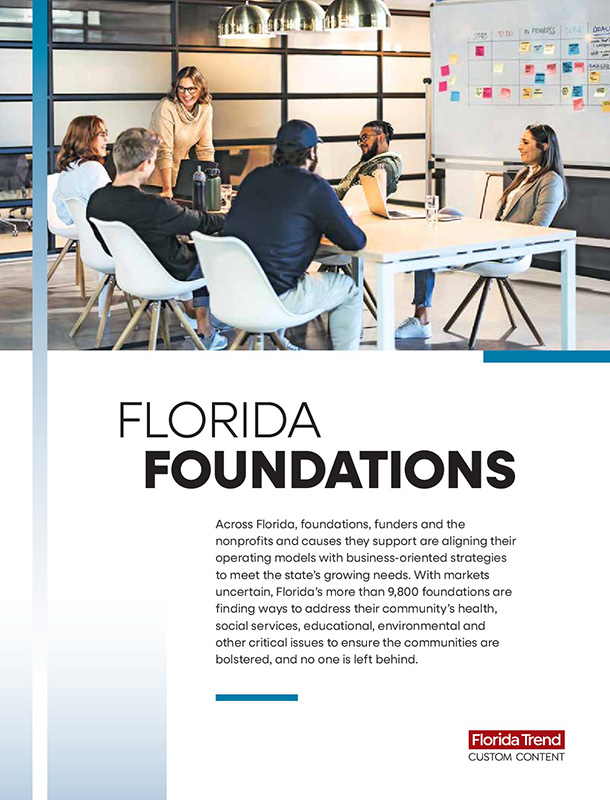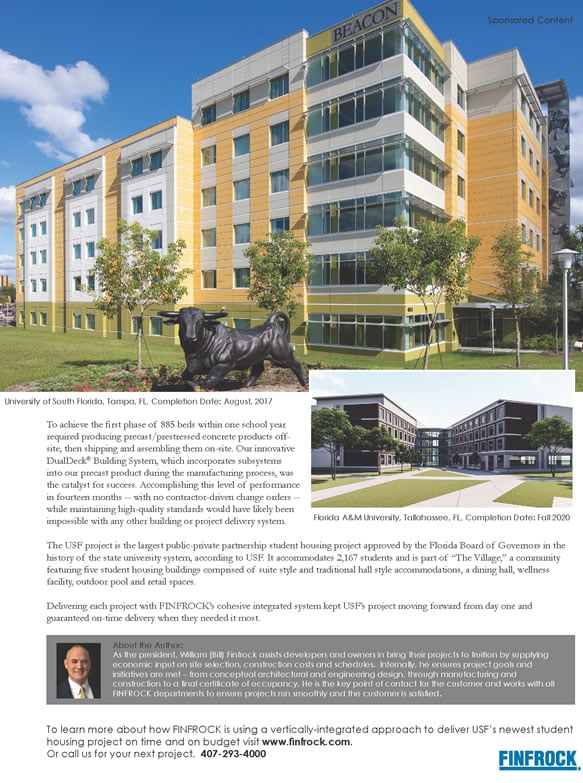Dr. Kent Thielen, vice president and CEO of Mayo Clinic in Florida, has never been satisfied with the status quo.
Case in point: When the neuroradiologist was promoted to chair of the department of radiology for Mayo Clinic’s Midwest hospitals and clinics in 2013, he set a goal of becoming the world’s top radiology department. His team delivered by boosting their research and ended up a leading recipient of National Institutes of Health awards, according to Mayo Clinic Magazine.
Under his departmental leadership, Mayo Clinic also became the first medical center in North America to acquire a 7-Tesla MRI — a cutting-edge piece of equipment that can detect subtle changes standard MRIs can miss — and it democratized “point-of-care manufacturing,” which creates 3D-printed models of patient anatomy to assist with diagnoses and surgeries. Prior to that, 3D models were reserved for the rarest of situations — the separation of conjoined twins, for example — but Thielen pushed his colleagues to “think bigger,” and they ran with it, building a facility that today produces anatomic models for thousands of cases.
Now in his sixth year of running Mayo’s Florida campus, Thielen is still thinking big.
A digital transformation is beginning to take hold of health care, he says, and the potential is unlimited. At present, Mayo Clinic treats about 1.3 million patients per year. He anticipates the system could one day treat “billions” of patients through “platform-based care” that leverages AI and the extensive anonymized data collected by Mayo and its partners.
Already, the delivery of care is looking far different than it did five years ago.
During a recent visit to Mayo’s Jacksonville campus, Thielen showed his :ORIDA TRENDS visitors around the 5,000-sq.-ft. command center where Mayo nurses and doctors care virtually for patients recovering at home from complex illnesses. Patients, he explained, are outfitted with devices that track their vital signs and a computer tablet that connects to their medical team, while nurses, paramedics and others are dispatched to patients’ homes when needed to administer IVs, collect blood and provide other services.
It’s part of a growing trend we explore this month in the story “Home Field Advantage,” on p. 58 — and Thielen says it’s only a start. In 2023, the hospital expanded the model to provide home-based care for cancer patients, and he sees it growing to eventually encompass emergency care and acute clinic level care in the home.
That’s the least of the gee-whiz stuff happening at the hospital. Three-tenths of a mile down the road, in Mayo’s Discovery and Innovation building, Mayo and its partners are expanding the boundaries of organ transplantation.
Thielen says lungs are fragile organs — so fragile in fact that only 20% of lungs recovered from organ donors are deemed adequate for transplantation. Meanwhile, hundreds of people die each year waiting for sets of lungs to become available.
To help close that gap, Mayo and United Therapeutics Corp. partnered to create a lung restoration center where “marginal” donor lungs are flushed with special solutions, ventilated and in some cases rehabilitated to the point where they are suitable for transplant. As of January, 79 sets of lungs processed at the facility — organs that otherwise would have been discarded — had been transplanted into patients.
Thielen sees more on the transplant horizon, including lungs, kidneys and other organs manufactured from scratch with 3D technology and stem cells. He says he’s already held lab-made lungs in his hands, and while such work is still in the research phase, he anticipates manufactured organs could be integrated into clinical practice over the next decade or so. Elsewhere on the regenerative medicine front, he notes that Mayo researchers are actively developing drugs and immunotherapies to treat everything from cancer to autoimmune disorders to neurologic disorders.
Among Mayo’s biggest innovations is the carbon ion radiation therapy system currently under construction in Mayo’s $233-million integrative oncology building. It will be the first of its kind in the western hemisphere.
Walking through the cavernous shell of the building that will house the mammoth equipment, Thielen explains the advantages of the therapy over other sophisticated treatments, such as proton therapy. Carbon atoms are 12 times heavier than protons and given their sizable mass, are often effective at treating tumors that don’t traditionally respond well to radiation.
Like proton therapy, the beam of particles is tight, so damage to surrounding tissue is minimal. There’s an added benefit that when carbon atoms blast open cancer cells, they expose other potential cellular targets for immunotherapy, providing potential ways to treat disease that’s metastasized to other parts of the body.
Pending FDA approval, Mayo expects to serve about 300 carbon ion patients a year when the therapy comes online in 2027, but Thielen suspects those numbers could rise to tens of thousands if not many more. He expects it will revolutionize cancer care. And given Thielen’s knack for “seeing around corners,” as one colleague puts it, I’d bet on it.
— Amy Keller, Executive Editor
akeller@floridatrend.com
Amy Keller
Amy Keller is executive editor of Florida Trend and oversees the magazine’s editorial department. Keller’s writings have also appeared in Salon, The New Republic, Broadcasting & Cable magazine, REALTOR Magazine, the Atlanta Jewish Times, the Detroit Jewish News and other publications. Keller graduated from The Ohio State University with a degree in journalism.













